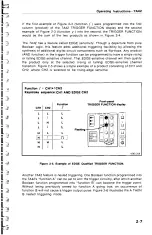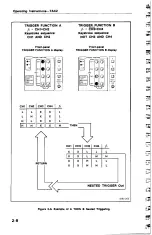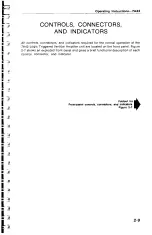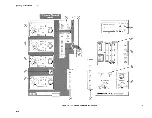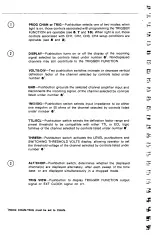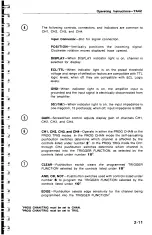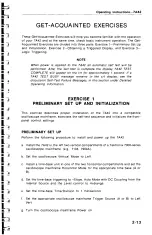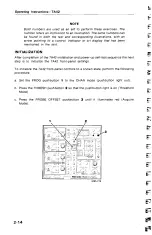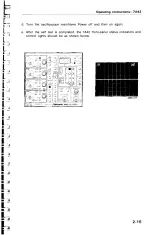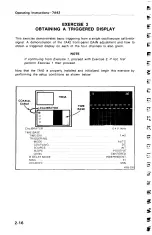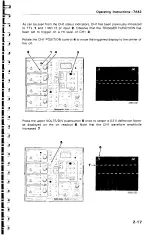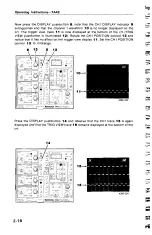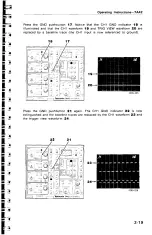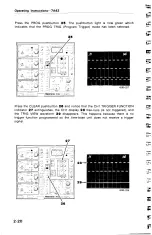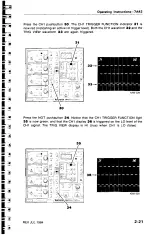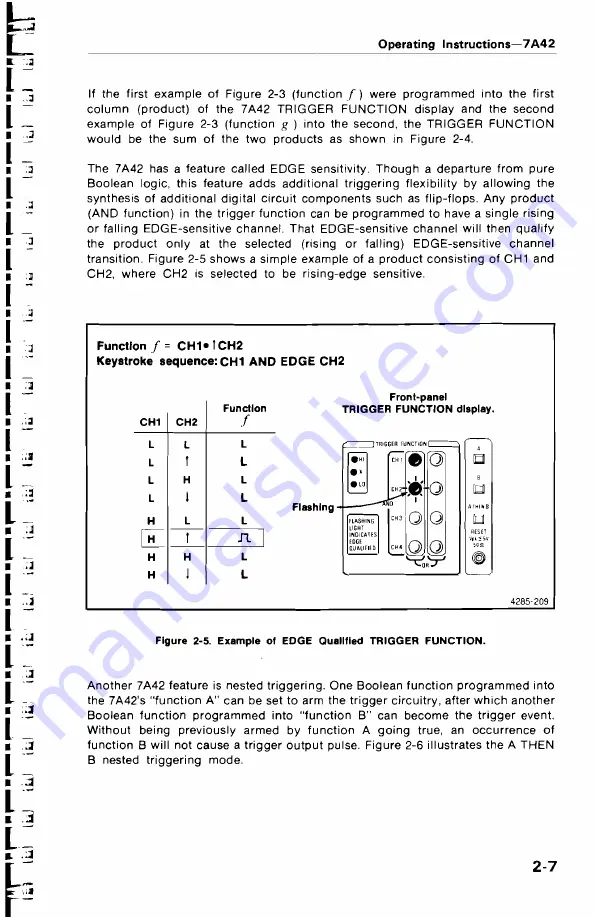
Operating
Instructions—7A42
If
the
first
example
of
Figure
2-3
(function
f
)
were programmed
into
the
first
column
(product)
of
the
7A42
TRIGGER
FUNCTION
display
and
the
second
example
of
Figure
2-3
(function
g
)
into
the
second,
the
TRIGGER
FUNCTION
would
be
the
sum of
the
two
products
as
shown
in Figure
2-4.
The
7A42
has
a
feature
called
EDGE
sensitivity.
Though
a
departure
from
pure
Boolean
logic,
this
feature
adds
additional
triggering
flexibility
by
allowing
the
synthesis
of
additional
digital
circuit
components
such as
flip-flops.
Any
product
(AND
function) in
the
trigger
function
can
be
programmed
to
have
a
single
rising
or falling EDGE-sensitive
channel.
That
EDGE-sensitive
channel
will
then
qualify
the
product
only
at
the
selected
(rising
or
falling)
EDGE-sensitive
channel
transition.
Figure
2-5
shows
a simple example of
a
product
consisting
of CH1
and
CH2,
where
CH2
is
selected
to be rising-edge sensitive.
Function
f = CH1
•
CH2
Keystroke sequence: CH1 AND
EDGE
CH2
Flashing
CH1
CH2
Function
f
L
L
L
L
t
L
L
H
L
L
I
L
H
L
L
H
I
H
H
L
H
I
L
Front-panel
TRIGGER FUNCTION
display.
4285-209
Figure
2-5. Example
of EDGE
Qualified TRIGGER FUNCTION.
Another
7A42
feature
is
nested triggering.
One
Boolean
function
programmed
into
the
7A42’
s "function
A" can be
set
to
arm
the
trigger
circuitry,
after
which another
Boolean
function
programmed into
"function
B
”
can
become
the
trigger
event.
Without
being
previously
armed
by
function
A
going
true,
an
occurrence
of
function B
will
not
cause a
trigger
output
pulse.
Figure
2-6
illustrates
the
A
THEN
B
nested
triggering
mode.
2-7















